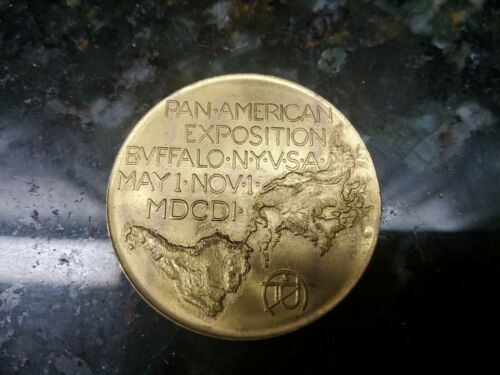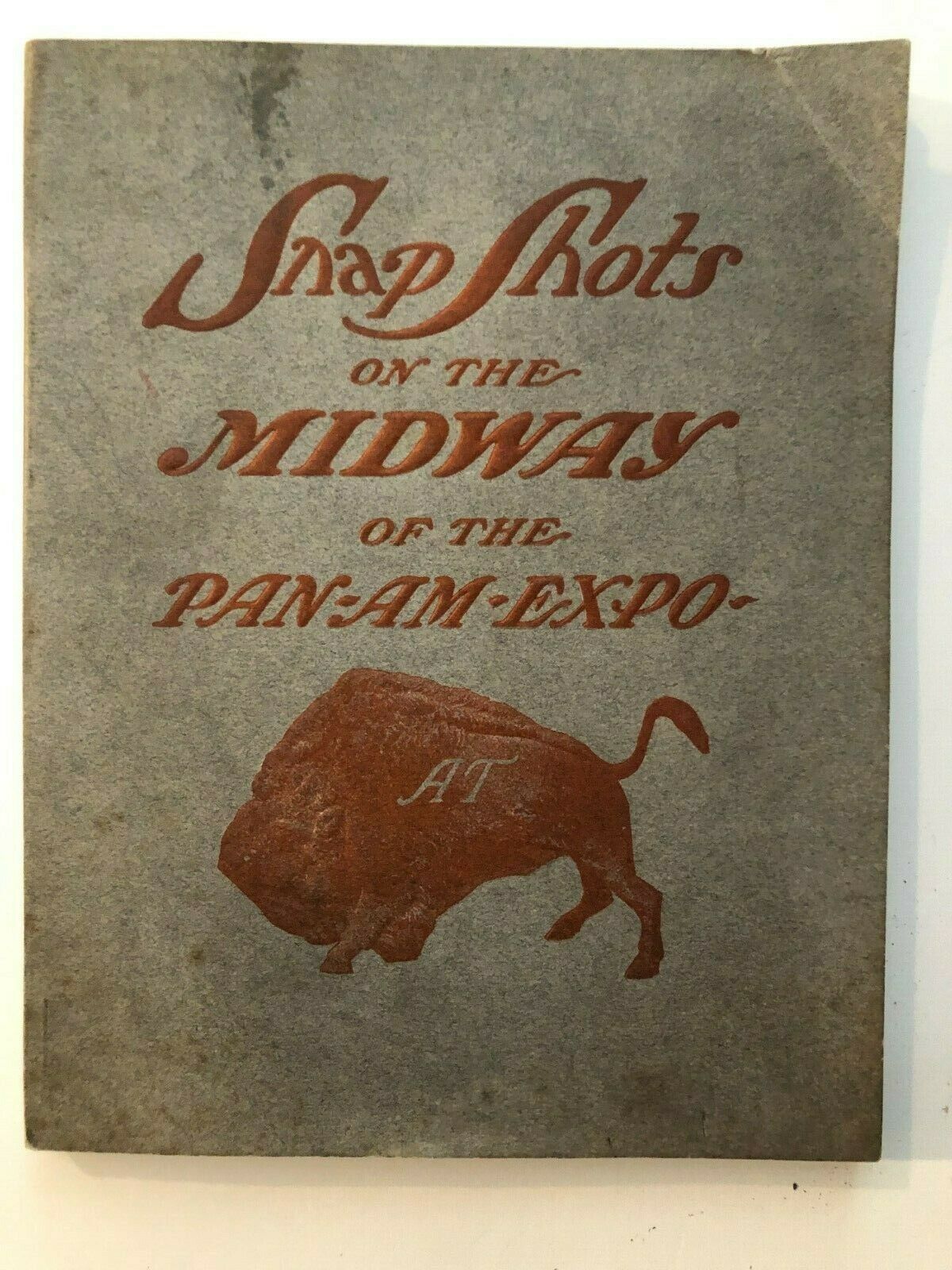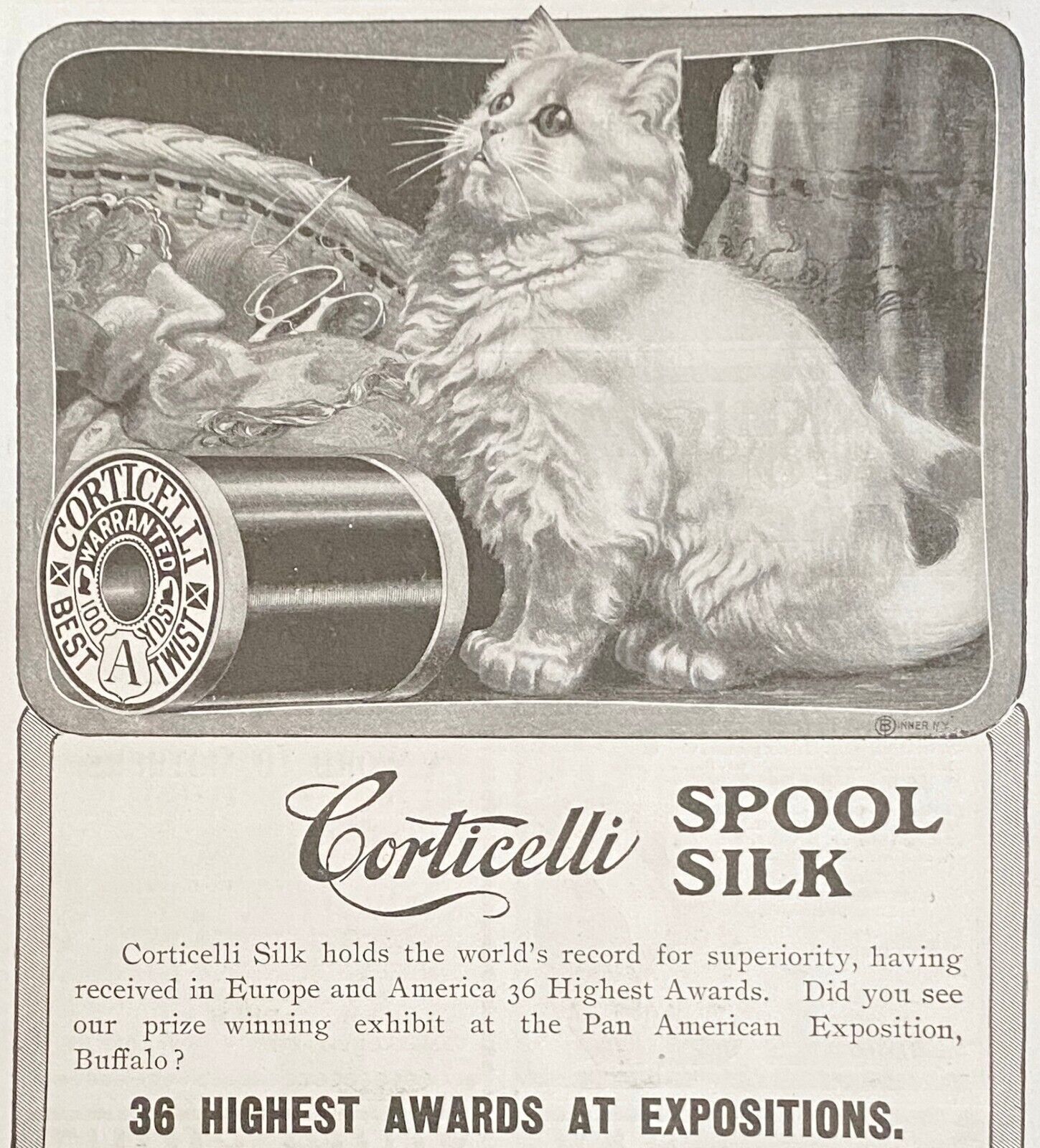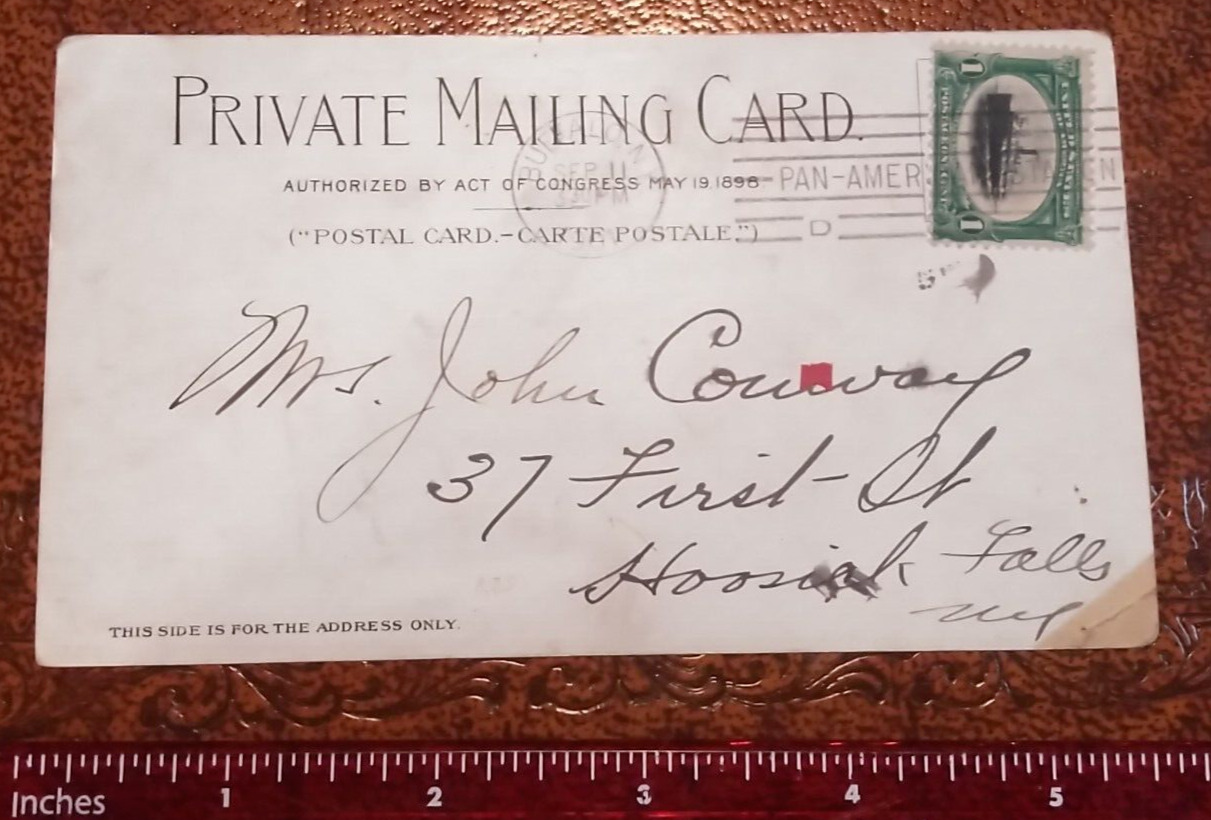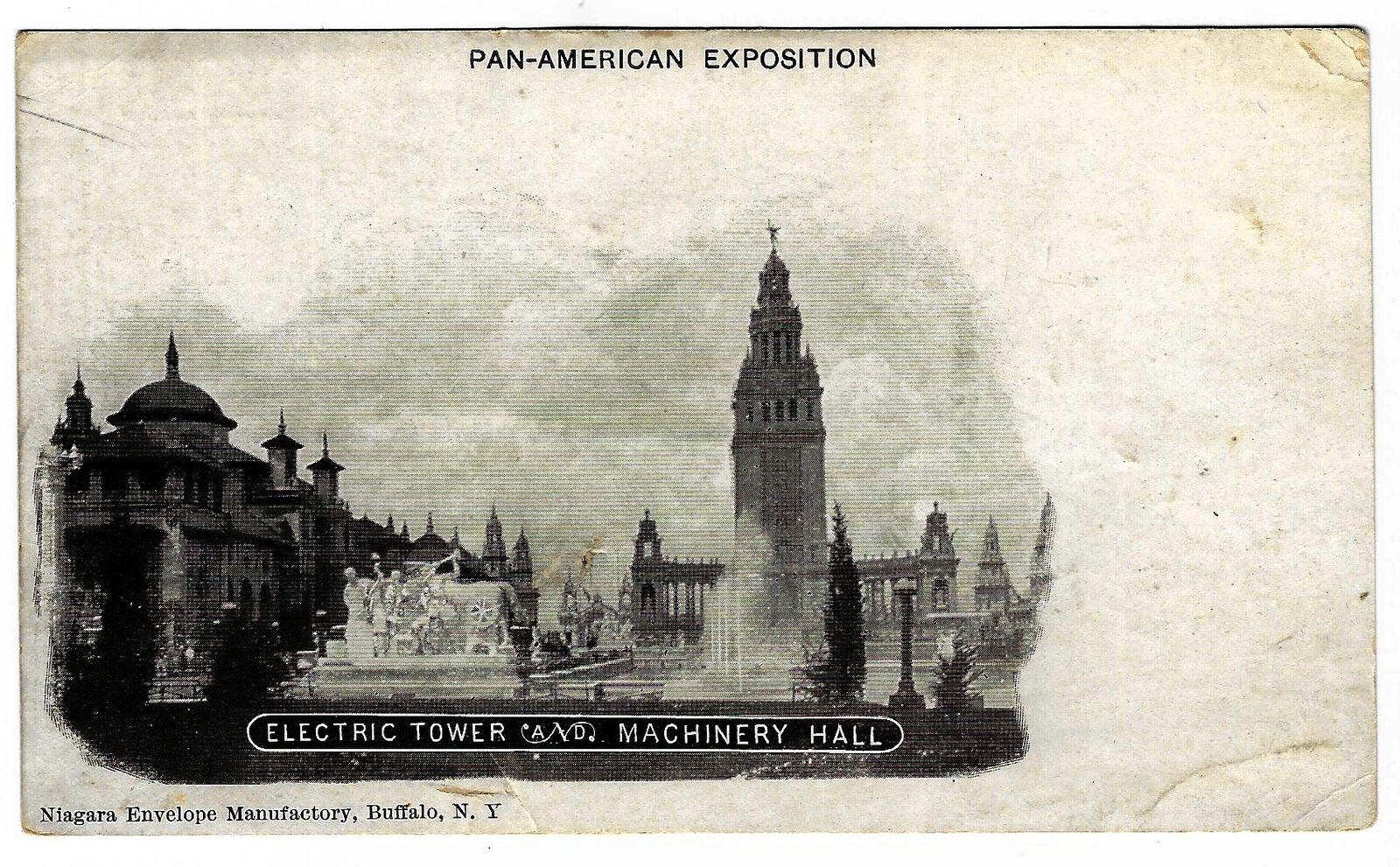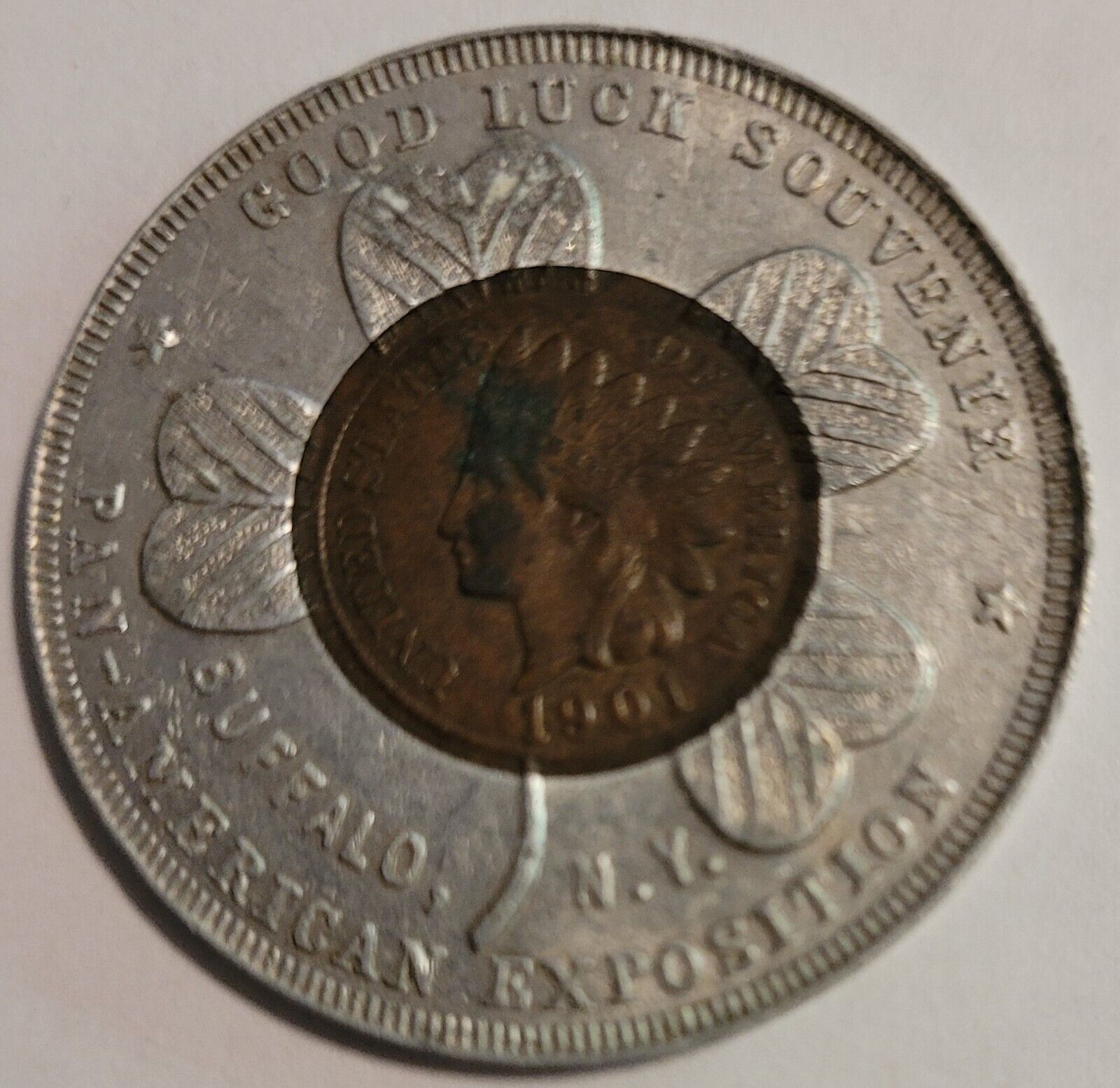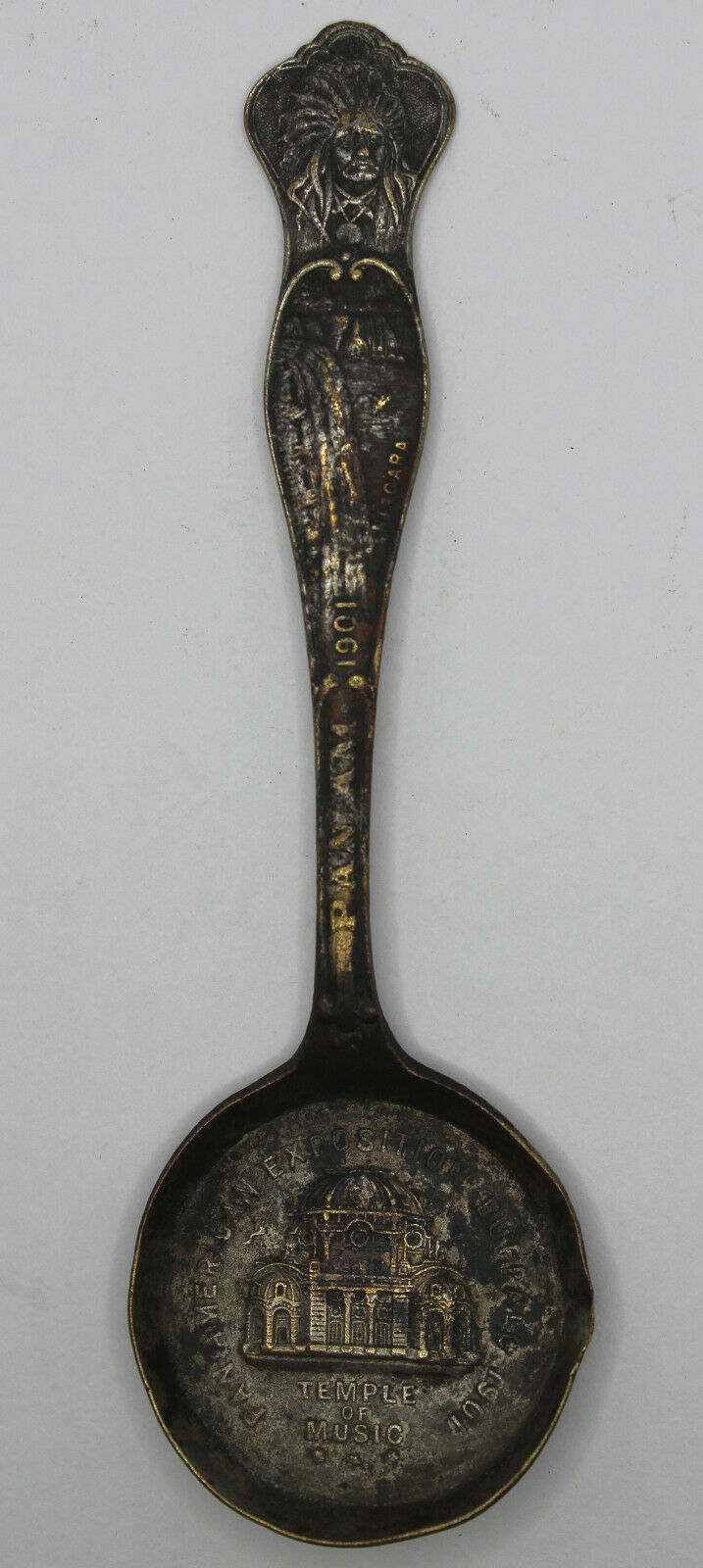-40%
UNUSUAL REAL METAL 1901 PAN-AMERICAN WORLD'S FAIR TRADE CARD UNITED TYPEWRITERS
$ 65.99
- Description
- Size Guide
Description
*****NOTICE: DUE TO THE VIRUS SITUATION SHIPPING OF ITEMS FROM CANADA TO THE U.S.A. HAS IN MANY CASES BEEN TAKING OVER ONE MONTH TO ARRIVE INSTEAD OF THE USUAL 10 TO 15 DAYS.*****Original Victorian Trade Card made from metal with a bird's-eye view of the Pan-American 1901 World's Fair. The card advertises the United Typewriter and Supplies Co., of New York City. The reverse side of the card shows a bird's-eye view of the 1904 Pan-American Exposition. The front of the card shows three different typewriters. The company had an exhibit in the Manufacturers Building at the Pan-American Exposition of 1901.
The metal card is in good condition but has the usual small scrapes and bumps that are to be expected after so many years.
The card measures about 2 inches tall and about 3 and one-half inches wide.
From a Google search:
The
Pan-American Exposition
was a
World's Fair
held in
Buffalo, New York
, United States, from May 1 through November 2, 1901. The fair occupied 350 acres (0.55 sq mi) of land on the western edge of what is now
Delaware Park
, extending from Delaware Avenue to Elmwood Avenue and northward to Great Arrow Avenue. It is remembered today primarily for being the location of the
assassination of United States President William McKinley
at the
Temple of Music
on September 6, 1901. The exposition was illuminated at night.
Thomas A. Edison, Inc.
filmed it during the day and a
pan
of it at night.
The event was organized by the Pan-American Exposition Company, formed in 1897.
Cayuga Island
was initially chosen as the place to hold the Exposition because of the island's proximity to
Niagara Falls
, which was a huge tourist attraction. When the
Spanish–American War
broke out in 1898, plans were put on hold. After the war, there was a heated competition between the cities of Buffalo and
Niagara Falls
over the location. Buffalo won for two main reasons. First, Buffalo had a much larger population; with roughly 350,000 people, it was the eighth-largest city in the United States. Second, Buffalo had better railroad connections; the city was within a
day's journey
by rail for over 40 million people. In July 1898,
Congress
pledged 0,000 for the Exposition to be held at Buffalo. The "Pan American" theme was carried throughout the event with the slogan "commercial well being and good understanding among the American Republics." The advent of the
alternating current
power transmission system in the US allowed designers to light the Exposition in Buffalo using power generated 25 mi (40 km) away at Niagara Falls.
The exposition is most remembered because
United States President William McKinley was assassinated
by an
anarchist
,
Leon Czolgosz
, at the
Temple of Music
on September 6, 1901. The President died eight days later on September 14 from
gangrene
caused by the bullet wounds.
On the day prior to the shooting, McKinley had given an address at the exposition, which began as follows:
Expositions are the timekeepers of progress. They record the world's advancement. They stimulate the energy, enterprise, and intellect of the people; and quicken human genius. They go into the home. They broaden and brighten the daily life of the people. They open mighty storehouses of information to the student.
The newly developed
X-ray machine
was displayed at the fair, but doctors were reluctant to use it on McKinley to search for the bullet because they did not know what side effects it might have had on him. Also, the operating room at the exposition's emergency hospital did not have any
electric lighting
, even though the exteriors of many of the buildings were covered with thousands of light bulbs. Doctors used a pan to reflect sunlight onto the operating table as they treated McKinley's wounds.
When the fair ended, the contents of the grounds were sold to the Chicago House Wrecking Company of Chicago for
US$
92,000 (.61 million in 2021 dollars).Demolition of the buildings began in March 1902, and within a year, most of the buildings were demolished. The grounds were then cleared and subdivided to be used for residential streets, homes, and park land. Similar to previous world fairs, most of the buildings were constructed of timber and steel framing with precast
staff
panels made of a plaster/fiber mix. These buildings were built as a means of rapid construction and temporary ornamentation and not made to last. Prior to its demolition, an effort was made via public committee to purchase and preserve the original Electric Tower from the wrecking company for nearly
US$
30,000 (7,160 in 2021 dollars). However, the necessary funding could not be raised in time.
The site of the exposition was bounded by Elmwood Avenue on the west, Delaware Avenue on the east, what is now Hoyt Lake on the south, and the railway on the north. It is now occupied by a residential neighborhood from Nottingham Terrace to Amherst Street, and businesses on the north side of Amherst Street. A stone and marker on a traffic island dividing Fordham Drive, near the Lincoln Parkway, marks the area where the Temple of Music was located.
The New York State Building, located in
Delaware Park
, was designed to outlast the Exposition and is now used as a museum by the
Buffalo History Museum
. Designated a
National Historic Landmark
in 1987, it can be visited at the corner of Elmwood Avenue and Nottingham Avenue. The Museum's Research Library has an online bibliography of its extensive Pan-American holdings. Included in the Library collection are the records of the Pan-American Exposition Company.
The
Albright-Knox Art Gallery
was intended to serve as a Fine Arts Pavilion but due to construction delays, it was not completed in time.
The original Electric Tower, although demolished, was the inspiration and design prototype for the 13 story, Beaux-Arts
Electric Tower
, built in 1912, in downtown Buffalo. The
Hotel Statler
was likewise demolished before Statler built a replacement in 1907, then another replacement in 1923.
A boulder with a plaque and a flagpole marking the site of McKinley's assassination was placed in the grassy median on Fordham Drive in Buffalo.
At least one engine from the miniature railway that carried visitors around the fair was preserved. It is currently privately owned and operated in
Braddock Heights, Maryland
.
Statistics
Ticket Cost:
US$
0.50
(.00 in 2021 dollars).
Total Event Expense:
US$
7 million
(8 million in 2021 dollars)
Visitors:
8,000,000
I will be listing many other Victorian Trade Cards from a huge 40 year old collection so please check out my other e-bay listings.
FREE SHIPPING. GUARANTEED ORIGINAL ITEM.
FREE SHIPPING BY REGULAR MAIL TO U.S.A.
DELIVERY TAKES ABOUT 15 DAYS AND SOMETIMES A BIT LONGER DEPENDING ON THE POST OFFICE.
ITEM WILL BE MAILED WHEN PAYMENT IS RECEIVED.
Buyer will be responsible for any custom and/or duty fees. Can be returned if you are not fully satisfied.


